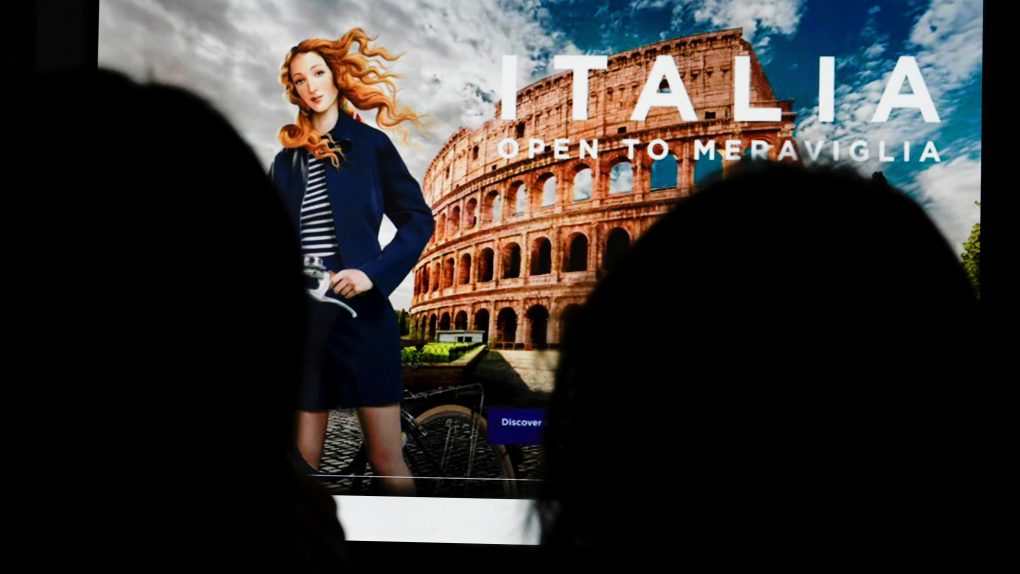Global Courant 2023-05-06 16:18:01
ROME –
Italy’s tourism ministry thought it had a surefire way to attract travelers to the country: turning a 15th-century art icon into a 21st-century “virtual influencer.”
The digital rendition of Venus, the goddess of love, based on Sandro Botticelli’s Renaissance masterpiece “Birth of Venus,” can be seen eating pizza and taking selfies for her Instagram page. Unlike the original, this Venus is fully clothed. The influencer claims to be 30, or “maybe a wee bit (older) than that.”
But the new ad campaign is facing significant backlash — with critics calling it a “new Barbie” that shakes up Italy’s cultural heritage.
The tourism campaign “downplays our heritage in the most vulgar way and transforms Botticelli’s Venus into another stereotypical female beauty,” said Livia Garomersini, an art historian and activist at Mi Riconosci, an art and heritage campaign organization, commenting on the project. last month.
The years-long campaign, produced by the national tourism agency ENIT and advertising group Armando Testa, has cost an estimated 9 million euros (about $9.9 million), according to ENIT CEO Ivana Jelinic.
Jelinic said the campaign was designed for overseas markets to attract younger tourists. The online Venus launched in Italy on April 20 and made its international debut in Dubai on the Arabian Travel Market earlier this week.
“We loved the idea that it would be a work of art that is timeless,” Jelinic told The Associated Press, adding that Botticelli’s Venus “seemed to us like an immortal icon that could well represent Italy.”
The new Venus has already been mercilessly memorized online, appearing between trash cans, next to mob boss Matteo Messina Denaro, and in other less-than-godly places.
The criticism extends beyond the use of a masterpiece and the way the campaign was orchestrated, including the use of stock photos and other blunders, such as a promotional video featuring a winery in Slovenia used as a stand-in for Italy.
An even greater sin for many is the campaign’s slogan, “Open to Meraviglia” (Open to Wonder), as it mixes English with an Italian tourist campaign, even as the country’s government tries to protect the Italian language as a pillar of its culture.
There are other language errors.
On the campaign’s website, an automatic translator turned Brindisi, a southern Italian port city, into its literal English definition: “Toast,” according to Matteo Flora, a professor at the University of Pavia. That part of the website is now obscured.
“Let’s not talk about the creativity point of view,” said Flora, “You may like (the campaign) or not, but technically it was … kind of an avalanche of problems.”
That includes not securing domains, allowing anyone to grab the material and mock the project with it.
Flora said the campaign was also a waste of money. The campaign’s creative team opted to use the “intelligence of human creativity” rather than artificial intelligence to build the virtual Venus – but Flora showed how he could quickly come up with a similar campaign using AI for a price of 20 euro. His social media posts have been shared by thousands of people.
The use of a likeness of Botticelli’s masterpiece has also been criticized by art historians, who say it greatly diminishes the beauty and mystery of the 15th-century original.
“Maybe Botticelli wouldn’t be happy about this,” says Massimo Moretti, an art history professor at the University of Rome, Sapienza.
Any use of an iconic image like the “Birth of Venus” risks hitting a cultural chord, marketing experts say.
“The more you try to change something that’s historical, the more likely the outrage will be,” said Larry Chiagouris, a professor of marketing at Pace University’s Lubin School of Business.
“People will say, ‘You’re changing the culture. You’re changing who we are, because it’s part of our history,'” Chiagouris added.
“I didn’t like that they used the Botticelli Venus like that, because it’s a work of art,” said Riccardo Rodrigo, a high school student in Rome. “They turned it into something socially friendly to entertain Gen Z. I don’t think it was necessary because it can just be used as is and not modified like they did.”
The Uffizi Gallery, which houses Botticelli’s “Birth of Venus” in Florence, declined to comment on the campaign.
However, for the creators of the campaign, any press is good press.
“It’s become so viral,” said ENIT’s Jelinic, adding that “web users have brought her to life” even when the new Venus was placed in unglamorous places.
“I find (it) interesting in terms of social communication,” Jelinic said. “Our campaign is more attractive than (critics) want to admit.”
Tourism officials plan to expand the campaign through the use of billboards and video screens at airports and railways.
——–
Grantham-Philips reported from Washington, DC








